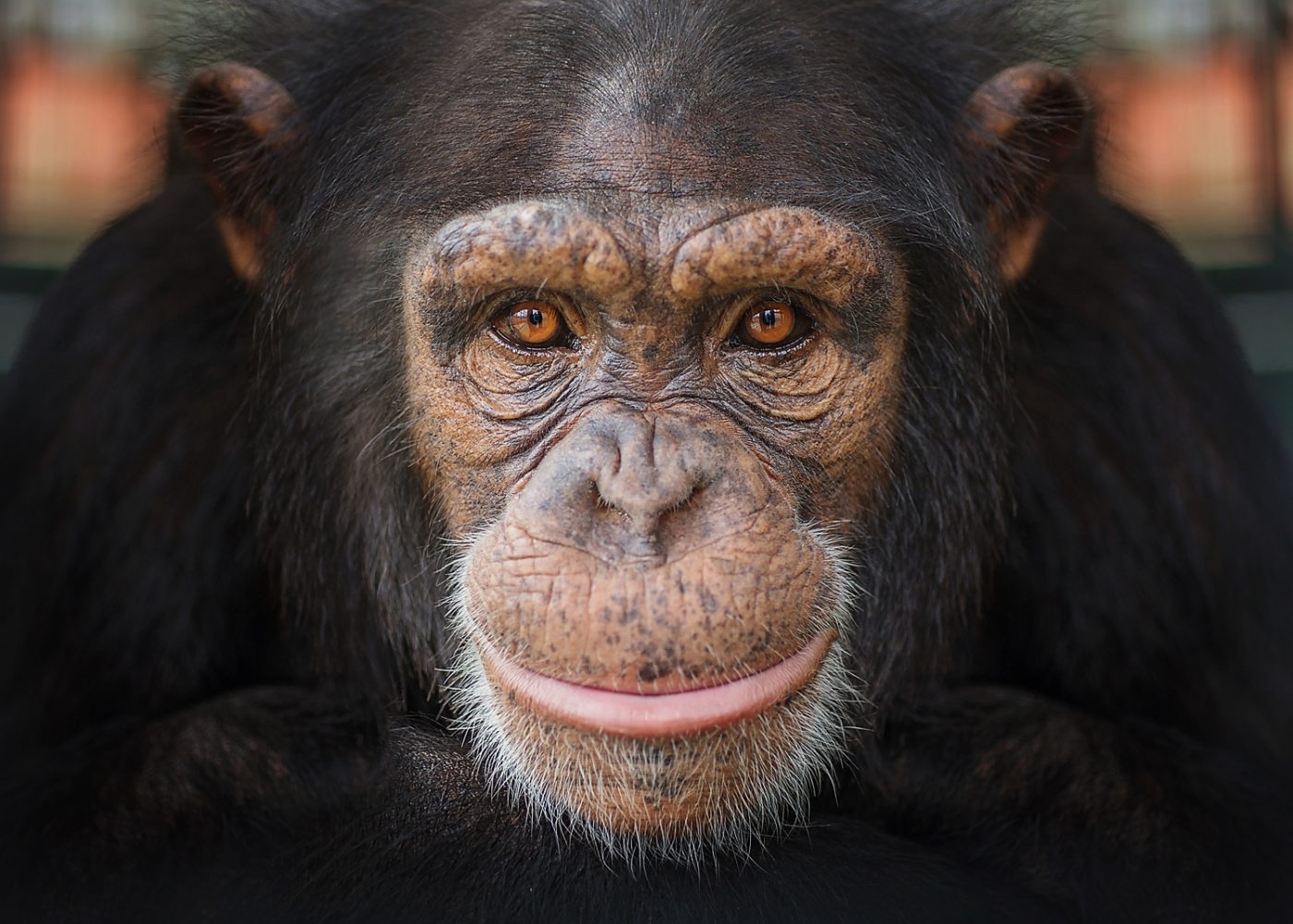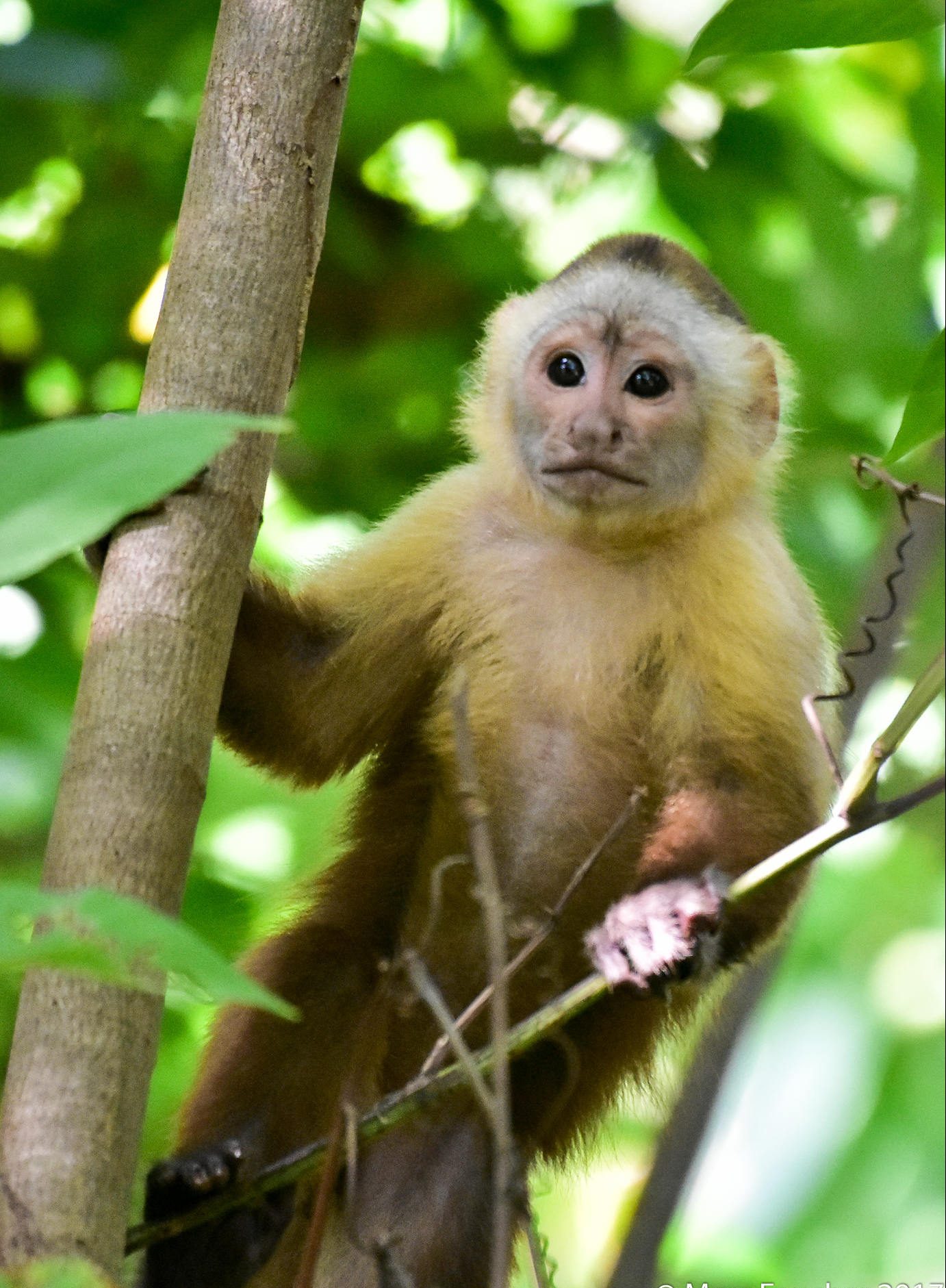Inquisitive and highly social Campbell’s Mona Monkeys are known for their intense hazel eyes and bright yellow brows. They use their large puffy cheeks to store food while they climb to the top of tree canopies to eat it. Males will engage in a dawn and dusk symphony of calling along with other species in a coordinated ritual. They are Near Threatened due to hunting and extensive forest loss throughout their range in West Africa for palm oil, coffee, cocoa and mining. Help them every time you shop by using your wallet as a weapon – #Boycottpalmoil #Boycott4Wildlife
Tag Archives: primates
Brown Howler Monkey Alouatta guariba
Despite their namesake, Brown Howlers come in a variety of colours from buff to reddish orange and brown-black. They are well known for their expressive and loud howling which can be heard from up to 2 kilometres away. Excellent seed dispersers, they are essential for maintaining a healthy rainforest. Only 12% of their forest habitat remains. Protect them every time you shop and #Boycottpalmoil #Boycott4Wildlife
Bangka Slow Loris Nycticebus bancanus
This species was last reported from the wild in 1937. If the Bangka Slow Loris is still alive then the burning of their habitat and conversion to agriculture (especially palm oil plantations) is their greatest threat.
Pint-sized and cute primate the Bangka #Slowloris is critically endangered from #palmoil #deforestation. Just 20% of their rainforest remains on Bangka island, #Indonesia. Help them every time you shop, be #vegan #Boycottpalmoil #Boycott4Wildlife
Buffy-tufted-ear Marmoset Callithrix aurita
These enchanting and charismatic tiny monkeys have a distinct “gothic” appearance. They live deep in the forests of a tiny area of Brazil. Buffy-tufted-ear Marmosets are also known as buffy tufted-ear mamosets or the white-eared marmosets. They are New World monkeys living in a geographically isolated region in the Atlantic coast that has been decimated for palm oil, soy and cattle ranching agriculture and mining. Help them every time you shop and be #vegan, #Boycottpalmoil and #Boycott4Wildlife!
Kaapori Capuchin Cebus kaapori
The Kaapori capuchin is on a knife-edge of survival – they are critically endangered. In 2017 their population had been decimated by 80% due to deforestation for agriculture including soy, cattle grazing and palm oil. They are forgotten animals with no formal protections in place. Fight for them every time you shop and be #vegan #Boycottpalmoil #Boycott4Wildlife
Primates are facing an impending extinction crisis – but we know very little about what will actually protect them
From lemurs to orangutans, tarsiers to gorillas, primates are captivating and sometimes unnervingly similar to us. So it’s not surprising that this group of more than 500 species receives a great deal of research and conservation attention. But despite this effort, more than 60% of primate species are threatened with extinction mainly due to humanContinue reading “Primates are facing an impending extinction crisis – but we know very little about what will actually protect them”
Research: Small room for compromise between oil palm cultivation and primate conservation in Africa
Research by the Joint Research Centre of the European Commission found that although oil palm cultivation represents an important source of income for many tropical countries, its future expansion is a primary threat to tropical forests and biodiversity. In this context, and especially in regions where industrial palm oil production is still emerging, identifying “areasContinue reading “Research: Small room for compromise between oil palm cultivation and primate conservation in Africa”
Ecuadorian White-fronted Capuchin Cebus aequatorialis
Ecuadorian White-fronted Capuchin Cebus aequatorialis Extant (resident) Ecuador; Peru Critically Endangered The Ecuardorian White-fronted Capuchin is affected by deforestation and hunting for bushmeat and the pet trade. Forests in the western lowlands of Ecuador have been severely reduced in the past half-century (Dodson and Gentry 1991, Sierra 2013, Gonzalez-Jaramillo 2016). Where habitat loss has fragmentedContinue reading “Ecuadorian White-fronted Capuchin Cebus aequatorialis”
Santa Marta White-fronted Capuchin Cebus malitiosus
Santa Marta White-fronted Capuchin Cebus malitiosus Endangered Colombia The Santa Marta white-fronted capuchin is threatened in Colombia by habitat loss and fragmentation due to cattle ranching and oil palm agro-industries. Pet trade may also pose imminent threats to wild populations of the Santa Marta white-fronted capuchin, especially in areas where tourism is widespread. IUCN redContinue reading “Santa Marta White-fronted Capuchin Cebus malitiosus”
Pygmy Marmoset Cebuella niveiventris and Cebuella pygmaea
The petite pygmy marmoset, the world’s tiniest true monkey, boasts a mix of brownish-gold, grey, and tawny fur. These little wonders, weighing just around 100 grams, communicate uniquely using chemical, vocal, and visual cues to ensure group safety and harmony. Although these marmosets prefer river-edge forests and can adapt to secondary forests, their homes are under serious threat. Rampant deforestation, mining, and palm oil cultivation are eroding their habitats, pushing the subspecies Cebuella niveiventris towards a “Vulnerable” status. The situation is dire, with an estimated 30% reduction in their population in just 18 years. Protect these delicate creatures and their home – use your wallet as a weapon, be #vegan, #BoycottPalmOil, and #Boycott4Wildlife.🌳🐒
Black Bearded Saki Chiropotes satanas
Black Bearded #Sakis are #endangered large monkeys endemic to #Brazil #SouthAmerica they are #endangered by #timber #palmoil #hydroelectric dam #deforestation. Help save them every time you shop and #Boycottpalmoil #Boycott4Wildlife!
Yellow-tailed Woolly Monkey Lagothrix flavicauda
Yellow-tailed Woolly Monkeys are social and active during daylight hours, living in groups with a dominant male, mature males and females, and young monkeys. They communicate through vocalizations like a loud, barking call. Endemic to the Peruvian Andes, they thrive in montane rainforests and cloud forests. They face an existential threat from habitat loss due to palm oil, soy and meat deforestation. Let’s unite to protect these precious creatures by boycotting palm oil, adopting a vegan lifestyle, and raising awareness for them. Together, we can protect the Peruvian Yellow-tailed Woolly Monkeys and their habitat. 🌳🐒💚 #BoycottPalmOil #Boycott4Wildlife
Western Lowland Gorilla Gorilla gorilla
Mighty, intelligent and gentle Western Lowland Gorillas are well-loved apes, they are #critically endangered by #deforestation and habitat loss for #palmoil, cocoa and mining along with disease and illegal poaching in #Congo #Nigeria #Cameroon Help them to survive every time you shop! Join the #Boycott4Wildlife
Golden Monkey Cercopithecus mitis ssp. kandti
The Democratic Republic of the Congo; Rwanda; Uganda Endangered Golden Monkey Cercopithecus mitis ssp. kandti The Golden monkey Cercopithecus kandti are Old World monkeys that live nestled deeply into the Virunga volcanic mountains of Central Africa. They are found in four national parks: Mgahinga, in south-west Uganda; Volcanoes, in north-west Rwanda; and Virunga and Kahuzi-Biéga,Continue reading “Golden Monkey Cercopithecus mitis ssp. kandti”
Varied White-fronted Capuchin Cebus versicolor
Varied White-fronted Capuchin Cebus versicolor Colombia Endangered Varied White-fronted Capuchin monkeys are gregarious and social animals that live in multi-male multi-female groups of approximately 20 individuals (including young), they are territorial and actively defends territories. Their main threats are agriculture, urban sprawl, deforestation, increasing energy matrix, increasing road matrix habitat fragmentation, habitat reduction, hunting, harvestingContinue reading “Varied White-fronted Capuchin Cebus versicolor”
Crested Capuchin Sapajus robustus
Crested Capuchin Sapajus robustus Brazil (Bahia, Espírito Santo, Minas Gerais) Endangered The crested capuchin or robust tufted capuchin (Sapajus robustus) is a species of robust capuchin monkey living in Brazil. They were formerly considered a subspecies of the black capuchin but is now considered to be a separate species. The species has a broad diet,Continue reading “Crested Capuchin Sapajus robustus”
Tana River Mangabey Cercocebus galeritus
Tana River Mangabey Cercocebus galeritus Kenya Critically endangered Tana River Mangabeys live in the flood-plain forest, riverine gallery forest, and the adjacent woodland and bushland of Kenya (Wieczkowski and Butynski 2013). Their abundance is highly correlated with the spatial characteristics of the forests (Wahungu et al. 2005). They are semi-terrestrial monkeys that can travel upContinue reading “Tana River Mangabey Cercocebus galeritus”
Eastern Gorilla Gorilla beringei
Eastern Gorilla Gorilla beringei Critically Endangered Congo, The Democratic Republic of the; Rwanda; Uganda Gorillas are some of the most powerful and striking animals in the world. Not only for their size and force, but also for their gentle human-like behavior. They play a crucial role in local biodiversity, roaming through large territories and helping,Continue reading “Eastern Gorilla Gorilla beringei”
Szabolcs Kókay: Wildlife Artist
Szabolcs Kókay was born in Hungary in 1976, and has been interested in nature, especially birds, since childhood. Although he has been drawing for as long as he can remember, it was only later on in his life, around the age of 20, when these two interests merged. For Szabolcs, watching and sketching nature goContinue reading “Szabolcs Kókay: Wildlife Artist”



















